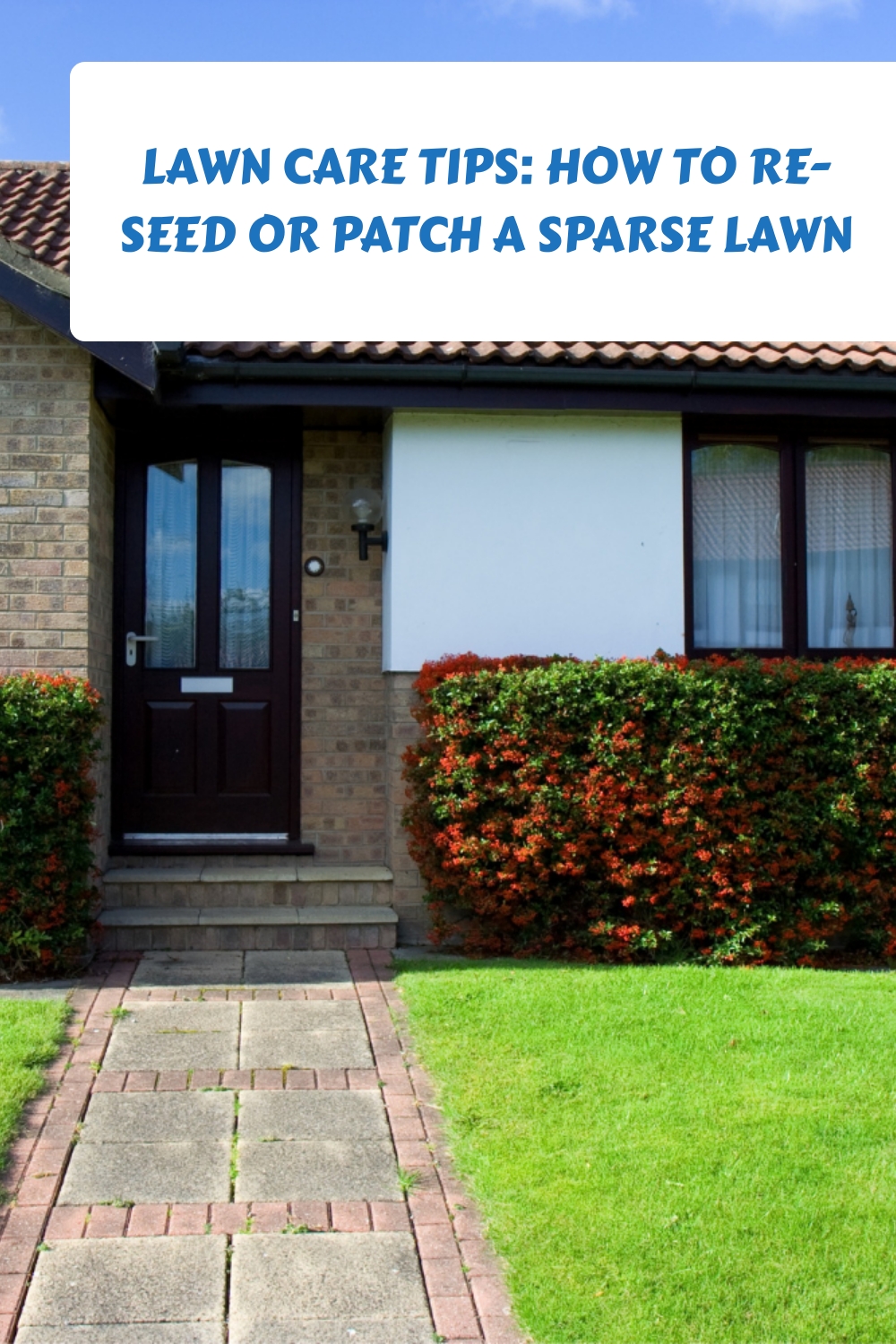If you have a patchy or sparse lawn, there are a few things you can do to improve its appearance. One option is to reseed the entire lawn. This will give your lawn a fresh start and help fill in any bald spots. Another option is to just seed the bald spots. This can be done by hand or with a seed spreader. Whichever method you choose, make sure to keep the seed moist until it germinates. You can do this by watering regularly or covering the seed with a thin layer of straw. Once the grass has germinated, continue to water it regularly and mow as needed. With a little care, your lawn will be looking green and healthy in no time!
Even though it is easy to run your eyes across your lush, green lawn in the summertime and instantly find spots of sparse grass that you need to re-seed or patch, the best time to do this is in the spring of the year, in either March or April, after the harsh cold, ice and snow of winter has passed.
During the spring, the grass seed is usually well-watered from the plentiful, seasonal rains and it is also protected from the searing heat of the summer sun while it is in its earliest stages of growth.
If you need to re-seed or patch some sparse areas in your lawn, the first step in this project is to have the soil in your lawn tested. Dig up several samples of soil from various places on your lawn. Put all of your soil samples together in a strong container, and take them to a place that performs soil testing. The results will tell you how much nitrogen, potash, and phosphorus is in your soil.
It will also tell you what the pH level of the soil in your lawn is. The best pH range for grass to grow in is between six and seven. Then, you will need to adjust the levels by spreading either lime or wood ashes on your lawn to raise the pH level, for example, or by adding compost or sawdust in order to lower the pH level. However, this will be done in a later step so it can be mixed in thoroughly with the existing soil.
The next step is to prepare the sparse areas in your lawn that you need to re-seed or patch. First, you will have to use a hoe or a rototiller – depending on how big the areas are – to loosen up the soil to a depth of about three to four inches deep. Then, you will need to use a rake and remove all of the rocks, weeds, sticks, and other debris from the soil.
Then, spread whatever type of additives – lime, wood ashes, compost, sawdust, et cetera – your soil needs. You should also add some fertilizer to the soil so the grass seeds can get added nutrition from the soil. (Some fertilizers contain herbicides in them that will help to keep unwanted weeds out of your lawn.) Use a rake to mix the additives, as well as the fertilizer, into the loose soil, and then rake the soil out until it is smooth.
Now you are ready to actually plant the grass seed into the prepared soil. The next step is to follow the manufacturer’s instructions on the grass seed package to find out the recommended way to spread the seed, and how thin or thick it needs to be applied.
After the grass seed is spread, either rake the seed so it is mixed thoroughly into the soil, or cover the seeds with a light layer of topsoil, but do not rake it again. Instead, spread a protective layer of straw over the areas of your lawn that you are reseeding or patching. The purpose of the straw is to help camouflage the grass seed from hungry birds, as well as to help protect them from harsh elements.
After you have successfully planted grass seed in all of the areas that you needed to re-seed or patch your lawn, the next step is to use your garden hose and a sprayer with a wide fan setting to lightly mist the areas until they are well – moistened. The spring rains should help keep the areas moist, but in dry weather, you will need to water the areas.
Finally, avoid mowing your new grass until it is relatively established and has grown to a height of about three to four inches. Then, when you finally do mow it, don’t mow it any lower than two inches.




